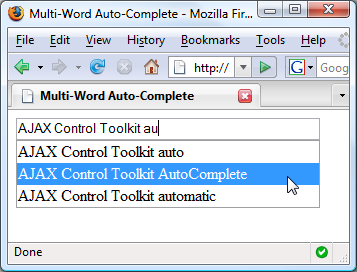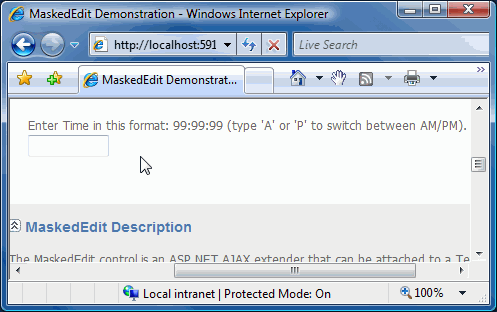Toolkit patching made easy [Announcing the AJAX Control Toolkit Patch Utility]
We've just made available the AJAX Control Toolkit Patch Utility, a simple ClickOnce application that makes it easy for *anyone* to contribute fixes to the AJAX Control Toolkit!
Background: We have a very active user community that's using the Toolkit in lots of ways we never imagined. Sometimes people come up with better ways of doing things and occasionally they bump into a new issue we didn't know about. When questions show up on the support forum, it's great to see someone follow up with a change to the Toolkit that resolves the issue. These community contributions are fantastic - we always try to add a pointer to the associated work item for the issue so we won't forget about it. However, there is a fair amount of effort involved in merging such fixes into the Development branch of the source code and that effort can delay the incorporation of proposed changes. The new Patch Utility is designed to streamline the process so it will be easier for people to contribute fixes and easier for the Toolkit team to incorporate them into the next release of the Toolkit. By making the process simpler and enabling the inclusion of more community fixes, everyone benefits by having a better Toolkit that they're less likely to have trouble with!
How patching works: The AJAX Control Toolkit Patch Utility Guide contains all the details - along with screenshots that walk through everything. The process itself is pretty simple. Once a Toolkit user identifies a problem, he/she runs the Patch Utility in "Create a Patch" mode which walks through the steps of downloading the latest Development branch of source code for the Toolkit. The user makes whatever changes to the Toolkit are necessary to fix the problem and alters the automated test cases to verify the new behavior. Then the user runs the Patch Utility again in "Prepare Patch for Submission" mode which collects the changes that were made, gives the user an opportunity to review them in a file differencing tool, and generates a compact ZIP archive containing the user's patch. The user attaches the ZIP file to the existing work item that corresponds to the issue he/she fixed and that's it!
What happens next: On the back end, we have a process running which periodically looks at outstanding work items for new patches. When a new patch is found, a set of "check-in-able" changes is automatically created for that patch. What that means for the Toolkit team is that it's easy for any of us to review the patch, merge it with the very latest version of code in the Development branch, test it on our machines, and check the patch in for inclusion with the next Toolkit release!
What changes make good patches: Bug fixes and minor enhancements to existing code make great patches because the overall amount of change is small and the effect of the change is fairly self-contained and easily testable. On the other hand, broad changes like the addition of an entirely new control or the refactoring of a significant chunk of code would not make good patches due to the widespread effects of such changes (we have a different process in place for such things; email us if you want to add a new control).
The Patch Utility enables anyone to make fixes to the Toolkit - if you're a Toolkit user and you've got a fix floating around on your machine, please use the AJAX Control Toolkit Patch Utility to submit it! And if you have any suggestions for things we can improve please send your feedback to us!


